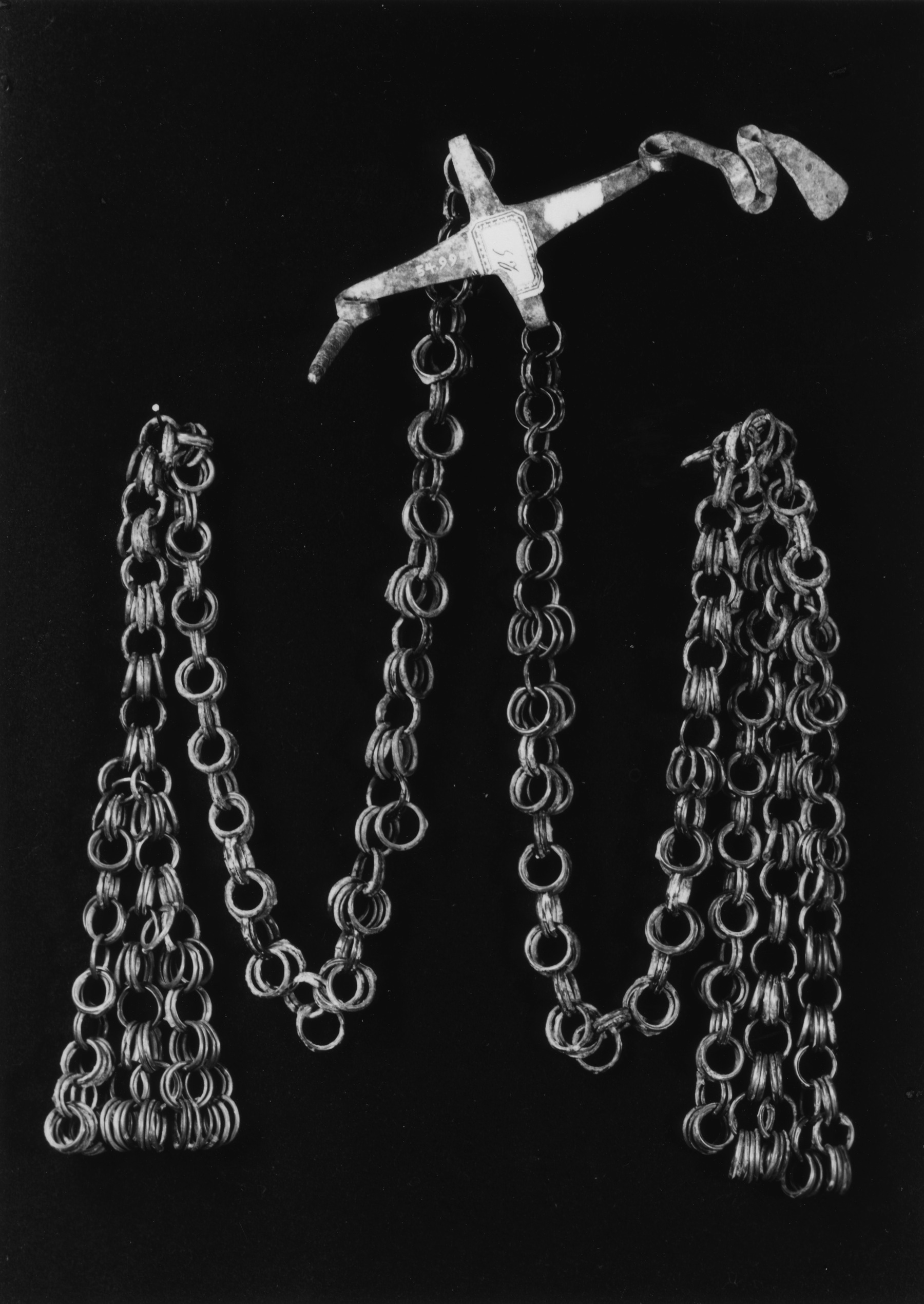Fibula with Swastika Motif
(Roman Empire )
This fibula was made in three parts. The pin has a small flat top, a spherical head, and a long shaft at the top which was a hole for attachment of the bow. This was made of metal, with round ends and a flat top. There are center side arms projected from the top. An ornamental disc was attached to the clasp at the end of the bow by soldering and riveting. The disc is decorated with two engraved swastikas, lines, crossbars, dots, and zigzags at the edge. The side arms end in loops. Chains are attached to these loops and to a ring in the head of the pin. Such chains are not known on other similar fibulae, found for instance at found at Terni, Norcia, and Cumae, but are common on other types and on various ornaments of the Picene inhabitants of Italy.
Provenance
Provenance (from the French provenir, 'to come from/forth') is the chronology of the ownership, custody, or location of a historical object. Learn more about provenance at the Walters.
Don Marcello Massarenti Collection, Rome [date and mode of acquisition unknown]; Henry Walters, Baltimore, 1902, by purchase; Walters Art Museum, 1931, by bequest.
Geographies
Italy, Etruria (Place of Origin)
Measurements
H: 3 1/16 × total L: 9 5/8 × D: 1 7/8 × H: 3 7/8 in. (7.7 × 24.4 × 4.7 × 9.8 cm)
L of Pin: 6 1/8 in. (15.5 cm)
Credit Line
Acquired by Henry Walters with the Massarenti Collection, 1902
Location in Museum
Not on view
Accession Number
In libraries, galleries, museums, and archives, an accession number is a unique identifier assigned to each object in the collection.
In libraries, galleries, museums, and archives, an accession number is a unique identifier assigned to each object in the collection.
54.994


